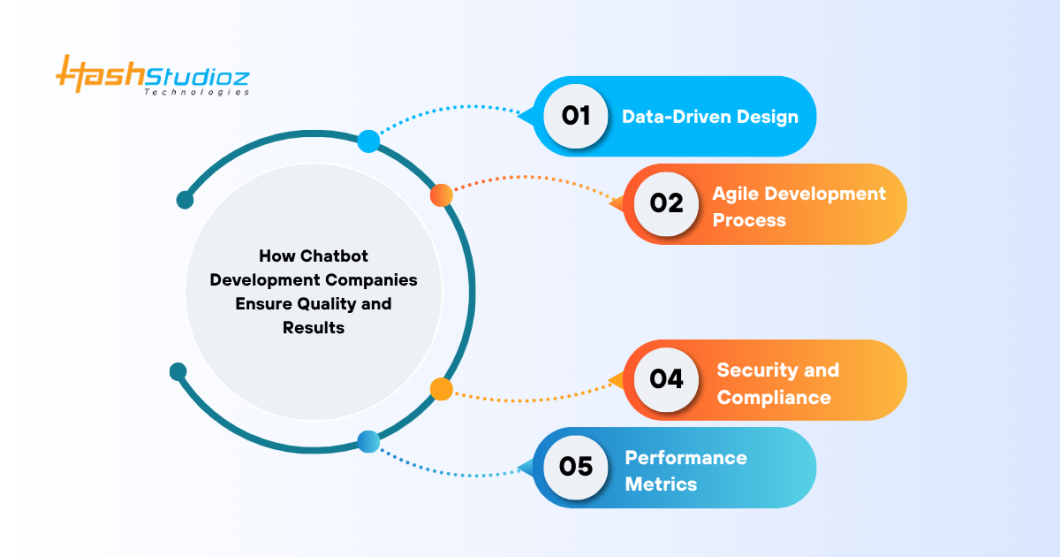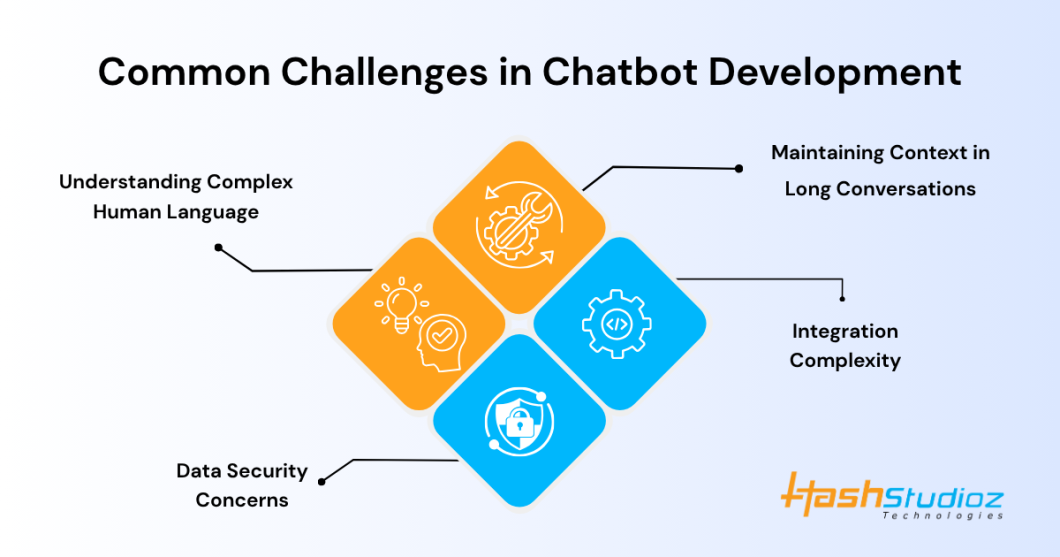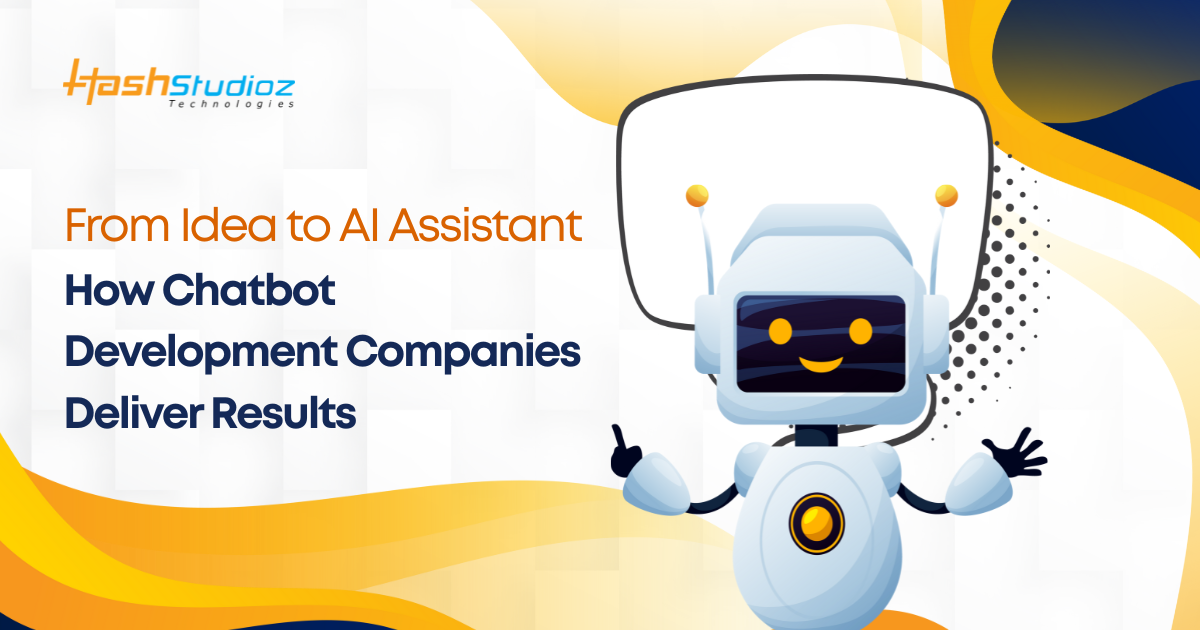In today’s fast-paced digital environment, automation is transforming how businesses interact with customers. Among various digital tools, AI-powered chatbots have become central to customer communication, sales, and support systems. A Chatbot Development Company plays a key role in turning ideas into functional AI assistants that deliver measurable outcomes.
Chatbots are no longer limited to answering basic questions. They now handle complex tasks such as lead qualification, appointment scheduling, payment processing, and even sentiment analysis. According to Statista (2024), the global chatbot market is expected to reach $27 billion by 2030, growing at a CAGR of 23.5%. This surge in adoption highlights the rising demand for intelligent conversational solutions.
Table of Contents
- Understanding the Concept of Chatbots
- Types of Chatbots
- The Technical Stages of Chatbot Development
- How Chatbot Development Companies Ensure Quality and Results
- Real-World Examples of Chatbot Success
- Common Challenges in Chatbot Development
- Future Trends in Chatbot Development
- Why Choose HashStudioz as Your Chatbot Development Partner
- Conclusion
Understanding the Concept of Chatbots
A chatbot is an artificial intelligence program that simulates human conversation using natural language. It can interact through text or voice and is integrated into platforms such as websites, messaging apps, and mobile applications.
Types of Chatbots
1. Rule-Based Chatbots
Rule-based chatbots operate by following predefined rules and decision trees. They respond to specific commands, making them ideal for handling simple FAQs or linear workflows without needing complex language understanding.
2. AI-Powered Chatbots
AI-powered chatbots use Natural Language Processing and Machine Learning to understand user intent, tone, and context. They offer advanced capabilities for personalized services and effective customer support, adapting over time through learning.
3. Hybrid Chatbots
Hybrid chatbots combine rule-based logic with AI technology. This combination allows them to balance precise control and flexibility, handling structured queries while also understanding more complex user inputs for better interaction.
A Chatbot Development Company selects the right model depending on a client’s goals, customer volume, and data complexity.
The Technical Stages of Chatbot Development
Developing a chatbot involves several structured steps, from conceptualization to maintenance. Each phase requires close coordination between developers, data scientists, and business analysts.
Step 1: Requirement Analysis
The first step involves understanding the business problem. Developers and clients collaborate to define:
- Target audience
- Business goals (e.g., reduce customer service time or increase conversions)
- Use cases (e.g., banking inquiries, healthcare appointments, or product support)
- Preferred platforms (WhatsApp, website, mobile app, or Slack)
This step also includes data collection from historical customer interactions, emails, and live chats to identify patterns and intents.
Step 2: Designing the Conversation Flow
After understanding user needs, a conversation design is created. This outlines how the chatbot will interact with users.
Key elements include:
- Defining user intents and entities
- Mapping possible conversation paths
- Handling fallback scenarios for unrecognized inputs
- Designing tone and language style
For instance, a financial chatbot must maintain a professional tone, while an e-commerce bot can use casual, friendly language.
Step 3: Choosing the Technology Stack
A Chatbot Development Company selects frameworks and APIs based on scalability, integration needs, and budget.
Common technologies include:
| Component | Tools and Frameworks |
| Backend | Node.js, Python (Flask, Django) |
| NLP Engines | Google Dialogflow, Microsoft Bot Framework, Rasa, IBM Watson |
| Databases | MongoDB, PostgreSQL, Firebase |
| APIs | RESTful APIs, Webhooks |
| Hosting | AWS, Azure, Google Cloud |
Choosing the right stack ensures faster response times, easy updates, and integration with existing CRM or ERP systems.
Step 4: Building the NLP Model
At this stage, the development team works on Natural Language Processing, the brain of the chatbot.
Tasks include:
- Intent Recognition: Understanding user goals.
- Entity Extraction: Identifying key details such as dates, names, or order IDs.
- Sentiment Analysis: Detecting emotions from text.
- Context Management: Remembering previous messages to maintain conversation flow.
For instance, if a user says “Book me a flight to Paris next Friday,” the bot must extract:
- Intent: Book flight
- Entity 1: Destination (Paris)
- Entity 2: Date (next Friday)
AI models are trained using labeled datasets, and accuracy is improved through iterative testing.
Step 5: Integration with Existing Systems
A well-built chatbot must communicate with backend systems to provide dynamic responses.
Examples include:
- CRM integration (e.g., Salesforce, HubSpot) for customer data.
- E-commerce systems (e.g., Shopify, WooCommerce) for order tracking.
- Payment gateways (e.g., Stripe, PayPal) for secure transactions.
- Databases for storing chat history and analytics.
Seamless integration ensures the chatbot operates as a complete digital assistant, not just a messaging tool.
Step 6: Testing and Optimization
Testing is one of the most critical steps in Chatbot Development.
Developers perform various testing levels:
- Functional Testing: Checks if responses are accurate.
- Usability Testing: Evaluates conversation smoothness.
- Performance Testing: Ensures quick response under high traffic.
- Security Testing: Protects data privacy and user authentication.
AI chatbots require continuous retraining as more data becomes available. According to Gartner (2023), 70% of AI chatbot projects fail due to insufficient testing and lack of ongoing optimization. Successful companies invest in real-time monitoring and analytics.
Step 7: Deployment and Maintenance
Once tested, the chatbot is deployed on chosen platforms.
Deployment can be on:
- Cloud servers for scalability
- On-premise systems for data-sensitive industries like healthcare or banking
Maintenance involves regular updates, retraining NLP models, and adding new features based on user feedback.
How Chatbot Development Companies Ensure Quality and Results
A professional Chatbot Development Company delivers value through a combination of technical expertise, project management, and measurable KPIs.
1. Data-Driven Design
Data plays a central role in chatbot accuracy. Developers use large training datasets to teach AI how to recognize various sentence structures and slang.
For instance:
- Customer queries like “I can’t log in” and “Login not working” must trigger the same intent.
- Contextual understanding improves as data volume grows.

2. Agile Development Process
Modern chatbot development follows Agile methodologies, allowing iterative improvements. Each sprint involves:
- Prototype creation
- User testing
- Feedback collection
- Model retraining
This short feedback loop ensures faster time to market and reduced errors.
3. Security and Compliance
Data privacy is a top concern in chatbot systems.
A reputable Chatbot Development Company follows:
- GDPR for EU-based users
- HIPAA for healthcare systems
- ISO 27001 for data management
Chatbots encrypt sensitive information and use secure authentication for payment or personal data processing.
4. Performance Metrics
To measure chatbot effectiveness, companies track metrics such as:
| Metric | Description |
| Resolution Rate | Percentage of issues solved without human help |
| Average Response Time | How fast the bot replies |
| Engagement Rate | Frequency of user interaction |
| Customer Satisfaction (CSAT) | User feedback on chat quality |
According to IBM research, businesses using AI chatbots can cut customer service costs by up to 30% while improving customer satisfaction scores.
Real-World Examples of Chatbot Success
Example 1: Banking Sector
A leading European bank deployed a conversational AI assistant for customer queries.
Results after 6 months:
- 40% reduction in call center volume
- 92% accuracy in answering basic banking questions
- Integrated with core banking APIs for balance checks and transaction history
Example 2: E-Commerce Platform
An online retailer used an AI chatbot for order tracking and personalized recommendations.
Outcomes included:
- 35% increase in repeat customer rate
- 24/7 availability improved user engagement by 50%
- Multi-language support expanded international reach
Example 3: Healthcare Chatbot
A healthcare startup implemented a symptom checker chatbot.
- Reduced appointment scheduling time by 60%
- Collected pre-visit information, improving doctor efficiency
- Followed HIPAA guidelines for patient data safety
These examples prove how Chatbot Development create measurable value across different industries.
Common Challenges in Chatbot Development
Despite their benefits, chatbots also face certain challenges:
1. Understanding Complex Human Language
Users often express the same intent in many ways. Training models to interpret slang, typos, and sarcasm is difficult.

2. Maintaining Context in Long Conversations
Chatbots must remember previous inputs for continuity. Context switching is still a technical hurdle.
3. Integration Complexity
Connecting chatbots with multiple systems (ERP, CRM, or custom APIs) can be resource-intensive.
4. Data Security Concerns
Handling user data responsibly and complying with legal standards is crucial, especially in finance and healthcare.
Addressing these challenges requires skilled developers, continuous updates, and strong data governance practices.
Future Trends in Chatbot Development
1. Multimodal Chatbots
Next-generation chatbots will combine voice, text, and visual inputs.
For example, a user could send an image of a product, and the bot would identify it and suggest similar items.
2. Generative AI Integration
Using large language models (LLMs) improves context awareness and creativity. These systems provide human-like conversations and dynamic learning from interactions.
3. Predictive Analytics
Chatbots will predict user needs based on past behavior.
For instance, a travel chatbot might suggest destinations based on seasonal preferences.
4. Emotion Recognition
AI is advancing toward identifying emotional cues through language tone and sentiment. This will make digital assistants more empathetic and effective.
According to MarketsandMarkets (2024), AI-driven chatbots with emotional intelligence will grow at 28% CAGR between 2025 and 2030.
Why Choose HashStudioz as Your Chatbot Development Partner
When selecting a Chatbot Development Company, HashStudioz Technologies stands out for its:
- Proven expertise in AI, NLP, and ML
- Successful chatbot deployments across banking, healthcare, retail, and logistics
- Focus on customization and scalability
- Commitment to security and ongoing support

Conclusion
Chatbots have evolved from simple automated responders to intelligent digital assistants capable of handling complex tasks. Their success depends on careful planning, strong technical architecture, and continuous learning. A Chatbot Development Company follows a systematic process — from idea generation and NLP training to integration and optimization — to build solutions that deliver tangible results.
With AI adoption growing across all sectors, well-designed chatbots are becoming essential for modern business operations.

